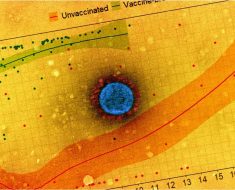
Researchers from The University of Texas MD Anderson Cancer Center discovered that treatment resistance in patients with myelodysplastic syndromes (MDS) is caused by two distinct classes of stem cells and identified possible therapeutic approaches that target these cells. Their findings, which could have significant benefits for patients with disease progression, were published today in Nature Medicine.
This research, which spans preclinical and clinical studies, represents the largest analysis to date of MDS patient samples. If further validated in larger clinical trials, the data suggests that the stem cell profiles of MDS could be considered as a biomarker for guiding the design or choice of secondary lines of therapy. Importantly, these findings indicate that treatment with venetoclax induces the death of stem cells in one of the MDS groups.
“The majority of MDS cases do not respond to current therapies or relapse,” said Simona Colla, Ph.D., associate professor of Leukemia and senior author of the study. “This study provides new insight into what causes therapy failure and disease progression in MDS and possibly provides targeted treatment options for these patients.”
Distinct subgroups of stem cells expand during MDS treatment and drive resistance
Myelodysplastic syndromes are a group of diseases in which the bone marrow doesn’t produce enough healthy blood cells. The diseases originate from cells known as hematopoietic stem cells (HSCs) that can persevere and even grow during standard-of-care treatment with hypomethylating agents (HMAs).
Roughly half of MDS patients who are treated with HMAs will develop resistance to these drugs and progress to secondary acute myeloid leukemia (sAML). Patients in whom the therapy has failed often survive only four to six months and have lower complete response rates to standard therapy, said Guillermo Garcia-Manero, M.D., professor of Leukemia.
The investigators analyzed more than 400 samples from patients with MDS taken at different stages of disease. Using integrative molecular profiling of HSCs, they found that HMAs eliminated mature cancer cells but left the stem cells alive, leading to disease relapse. Comparing bone marrow samples from untreated patients to those of healthy donors revealed that MDS samples could be divided into two groups based on the profile of those stem cells.
The samples from one of the MDS groups had an abnormal pattern of increased frequency of common myeloid progenitors (CMP) within the myeloid hematopoietic progenitor cell compartment. The other MDS group had an increased frequency of granulocytic-monocytic progenitors (GMP) within the compartment. In both groups, the stem cell populations sustained the disease during treatment and expanded after HMA therapy failure, thus driving disease progression.
The expansions of each of these MDS stem cell types depended on activation of specific signaling pathways unique to each group: the BCL2 survival pathway in the CMP group and NF-κB signaling in the GMP group.
As a proof-of-concept, the researchers pharmacologically targeted the upregulated survival pathways in preclinical models. Treating cells from the CMP group with the BCL2 inhibitor venetoclax depleted the MDS stem cells in vitro and decreased tumor burden in patient-derived xerograph models. The researchers observed similar results when using the NF-κB inhibitor BMS-345541 in cells from the GMP group.
Clinical analysis suggests targeting stem cell classes could improve outcomes
Based on these results, the researchers evaluated whether HSC profiles could predict treatment responses in a clinical setting. They performed a retrospective analysis of 21 MDS patients with blast progression after treatment with HMA therapy and venetoclax.
Consistent with the hypothesis that venetoclax-based therapy selectively targets HSC populations with the CMP profile, researchers observed a significant decrease in stem cells following treatment in patients with CMP pattern disease. Conversely, there were no significant changes in patients with GMP pattern MDS.
Patients with CMP pattern MDS had a shorter time to achieve complete remission relative to those with the GMP pattern (1.2 months vs 6.5 months) and a longer relapse-free survival duration (16.3 months vs 5.2 months). Together, these findings suggest that CMP pattern MDS patients with blast progression can benefit from treatment with the highly selective BCL2 inhibitor venetoclax.
“Our study shows both preclinical and clinical evidence that MDS is maintained by two distinct stem cell profiles,” said Irene Ganan-Gomez, Ph.D., instructor of Leukemia. “This research advocates that the stem cell profile of MDS should be considered to determine appropriate therapeutic approaches targeting these cells, particularly for venetoclax-based therapy.”
Further studies are needed to establish whether the immune system contributes to disease remission, and larger prospective trials are needed to determine the selective benefits of the venetoclax treatment in patients with the CMP pattern. The researchers also are currently testing the hypothesis that targeting two other BCL2 family members (MCL1 and BCL2A1), both downstream effectors of NFKB pathway activation, can overcome disease progression in GMP pattern MDS.
Source: Read Full Article





